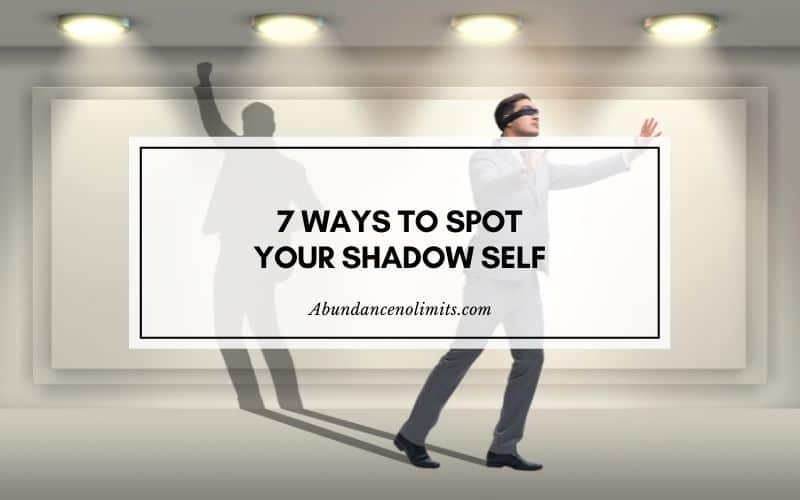We all know what a shadow is – a dark figure cast upon a surface by a body intercepting light. As kids, we have chased shadows or even tried to run away from them.
In psychology, the shadow is defined as “either an unconscious aspect of the personality that the conscious ego does not identify in itself or the entirety of the unconscious”.
Yes, that is a bit too deep to understand without more explanation.
This article explores the topic of shadows in the context of analytical psychology through examples of the shadow self and tells you how to find your shadow self.
What is your shadow self?
Your shadow self contains the aspect or aspects of your personality that you have rejected at some point in the past and you don’t want to admit to having in the present. It is often referred to as the “dark side” of your personality as it mostly consists of primitive and negative emotions.
This is not entirely true. The shadow is your perception of weak and unproductive attributes you once possessed and feel the need to deny or hide them. These attributes need not have negative connotations in the real world.
Let us understand this through some examples.
The classic elements of your shadow self are anger, ego, rage, laziness, sadness, cruelty, envy, greed, selfishness, blind desire, and hunger for power. However, some qualities considered as positive in the general perception are also rejected by you for reasons of your own. The best examples are independence, personal power, and emotional sensitivity.
These disowned aspects of your personality don’t disappear into thin air. Though you deny their existence, ignore them, and try to cast them out, they remain with you within your unconscious mind. And, they continue to influence your thoughts, feelings, emotions, beliefs, and actions without your awareness.
How to deal with your shadow self?
As already said, it is not possible to get rid of your shadow self, however much you want to. It would remain with you hidden in your unconscious mind and continue to influence every aspect of your life. So, the question is how to manage your shadow self?
The ideal way to deal with your shadow self is to accept, acknowledge, and befriend it. Denying its existence can only make matters worse for you. Dig it out from the depths of your mind where you have banished it. Embrace and understand it.
How to spot your shadow self?
You can spot your shadow self by paying attention to your behavior and how you interact with others. If you are still having trouble with this, you can use these simple methods to recognize your shadow.
1. Your tendency to judge people brutally
This is a good indication of the influence of your shadow on your behavior. The way you judge others is based on your own weaknesses. The very same weakness you rejected a long time ago and became your shadow.
You judge only those people who you feel you have the authority over. And it reveals more about yourself and your insecurities than the actions or status of the judged person. Your own fears, frailties, and vulnerabilities cloud your opinion of others and this comes out as harsh judgments.
2. You project your issues onto others
Projection is a self-defense mechanism involving ascribing your weaknesses and unwanted emotions onto another person. When you dislike something in yourself, you point it out in others.
What you project are the attributes you dislike in yourself and are not proud to possess. These are the same attributes you disown and become your shadow. What you project in others reveals the elements in your shadow self.
Some examples:
- A rude person viewing others as arrogant and overbearing.
- A cheating person accusing the partner of disloyalty.
- An authoritative parent accusing the child of bullying.
- Someone with body image issues belittling others for their body shapes.
- A child with low self-esteem believing others avoid them.
3. Your triggers can set you off on a destructive path
The triggers you have now are remnants of some past traumatic incident. These are the weak spots in your personality that you have disowned but emerging as triggers. Understanding your triggers can offer you clues about your shadow self.
4. You troll others on the social media platforms
The anonymity offered by the internet makes you bold enough to say anything you want about others. Even when you know full well that your words will hurt others, you still do it.
The lack of consequences makes you bring out your worst facets. These aspects you are ashamed of and have rejected a long time back. Paying attention to the way you troll others can help you spot your shadow self.
5. You tend to take it out on people who are under your command
You may not be able to voice your opinion or raise your concerns with people in higher positions. You find yourself in a helpless position to endure the harsh treatment of these people. All these resentments pile up and come out as outbursts at others who are at your mercy.
At work, you may not be able to say anything to your boss but take it out on your subordinates. At home, you are forced to put up with your overbearing partner but vent your anger at your children or even strangers.
6. You like to play the victim
When you have a victim mentality, you tend to
- Blame others for your failure
- Take no responsibility for your actions
- Hold grudges against the entire world
- Cannot trust anyone
- Wallow in self-pity
- Feel weak and helpless
- Fail to set limits
- Always ready for petty arguments
- Lack of confidence makes others take advantage of you
- Miserable existence makes you anxious and depressed
All your behavior patterns point to elements of your shadow self.
7. Your failure to set boundaries
When you fail to set boundaries in your relationships, it says a lot about your past harrowing experiences. Often this behavior stems from your guilt about past mistakes or setbacks. You may be reluctant to say no because of the lost opportunities or adverse reactions you received in the past.
Bottom line
You need to make peace with your shadow self so that you can live in peace. Once you spot your shadow, you can start the healing process. This is called shadow work.
Shadow work involves confronting the shadow and bringing its hidden aspects out in the open and accepting and understanding it. Take care not to shame, blame, or judge it.
With the shadow self on your side and working for you rather than against you, you will find life much easier and more enjoyable.
Recommended Reading:


